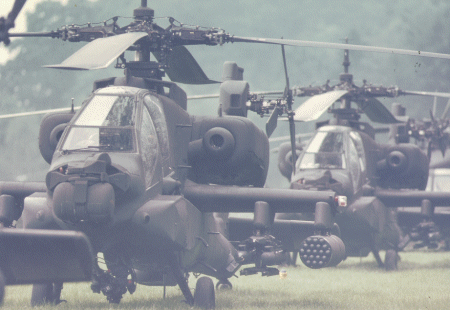Ramon Lopez/WASHINGTON DC

US Army Boeing AH-64A Apache attack helicopter pilots were undertrained and ill-equipped to engage Serb forces in Kosovo, according to a report written by Brig Gen Richard Cody, who led Task Force Hawk in Albania.
The internal memorandum that was sent to Gen Eric Shinseki, the US Army's chief of staff, explains why the 24 Apache gunships never saw action in the Kosovo air campaign. It discloses that weeks of training exercises were required because the pilots that were deployed from Germany lacked the needed proficiency. The review also notes in graphic terms the glaring shortcomings of the early-model Apache's long-range communications equipment, electronic countermeasures (ECM) and fuel system.
Cody recommends ways to alleviate the problems in testimony before the House Armed Services Committee's military readiness panel, which released his report. The veteran attack helicopter pilot says: "Task Force Hawk is not an anomaly. We have been 'robbing Peter to pay Paul' for quite some time in aviation since we implemented the Aviation Restructure Initiative. I think it is time that we do a bottom-up review of our aviation force structure." Shortcomings in pilot training, he says, "are placing them and their units at risk when we have to ramp up for a real world crisis".
Cody says Albania's rugged terrain, poorly marked power lines and unpredictable weather patterns required use of the Apache's first-generation forward looking infrared (FLIR) gear in conjunction with night vision goggles (NVG). He says it took three weeks for the pilots to re-qualify for NVG operations.
He also says Apache pilots must routinely retain NVG proficiency and have access to NVGs until second-generation FLIRs are fielded in 2004.
The AH-64A's ECM systems "are not reliable enough", says Cody and, in some cases, "not effective." He adds that Apache pilots "have lost confidence" in the APR-39 radar warning receiver and the ALQ-136 radar jammer and "are not sure of the ALQ-144 IR jammer's true capabilities".
He says the US Army must push ahead with retrofit of the Lockheed Martin Sanders suite of integrated IR countermeasures to replace the ALQ-144 and the ITT avionics suite of integrated radio frequency countermeasures to replace the APR-39 and ALQ-136. Fielding the state-of-the art ECM unit is not scheduled for seven years.
Task Force Hawk pilots also had to choose between external fuel tanks and munitions. Cody backs installation of internal auxiliary fuel tanks on the Apaches. The US Army will receive 48 tanks from Robertson Aviation, starting at the end of the year.
"Today, across the US Army, we are seeing the results of many years of declining resources and resource constraints in terms of funding for training and equipment," Cody says.
Source: Flight International























